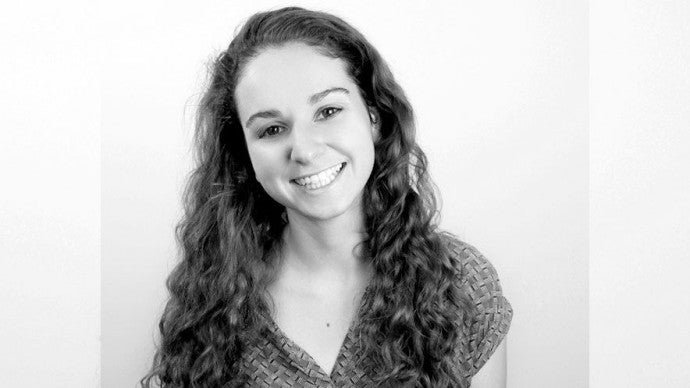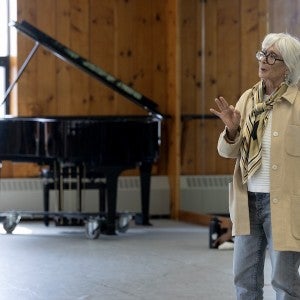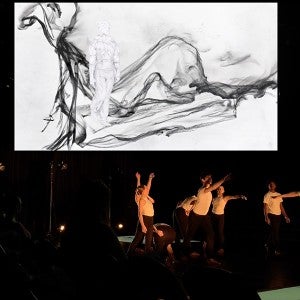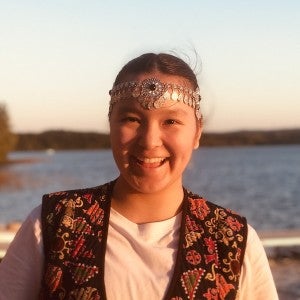Helping hospitals help patients
Interdisciplinary Arts alumna Melanie Chitwood uses her public health training to help hospitals prepare for COVID-19.

When television personality Fred Rogers was a young boy, his mother gave him a now-famous strategy for processing frightening news: Look for the helpers. “To this day, especially in times of disaster, I remember my mother’s words and I am always comforted by realizing that there are still so many helpers,” Rogers said.
In the midst of the coronavirus outbreak, Melanie Chitwood (IAC 09-10, IAA 10-12) is one such helper. A charter member of Interlochen Arts Academy’s Interdisciplinary Arts program, Chitwood is now a research associate in the Department of Epidemiology of Microbial Diseases at the Yale School of Public Health. Chitwood recently joined C-SPEC, a collaboration between researchers at Yale, Harvard University, Sanford University, and the University of Maryland. As part of C-SPEC, Chitwood is developing models that help hospitals predict their needs for beds, ventilators, and other vital virus-fighting resources.
We spoke with Chitwood to learn more about her journey from Interlochen to epidemiology, the C-SPEC project, and what the statistics you see on the news actually mean.
How did you get involved with the C-SPEC project?
I work in the Public Health Modeling Unit at Yale, which was formally set up nine months ago, although the various departments had been collaborating for a while. When Gregg Gonsalves received an invitation to collaborate with C-SPEC, he recruited me to take part in the collaboration. We were hungry to do what we could to help.
What is your role in the C-SPEC project?
One thing that I have been working on is what we call a queuing model. The idea of a queuing model is to get a sense of how many people will be coming to the hospital, and how long they will need care at different levels (such as ICU or a normal floor). The queuing model tries to determine how long the wait for a bed would be based on the number of available beds, and how quickly a hospital would run out of space to care for patients. These numbers help hospitals and counties know how to plan.
What goes into developing a queuing model? What is the process like?
It normally starts with sketching it out and trying to understand the process we want to model. For example, with COVID-19, we sketched the path of a patient: The patient is going to arrive at the hospital, then go here, and then go here. Once we have a clear picture of how patients would move through the system, we write out a series of formulas that explain the process we drew in our diagram. Next, we “parameterize,” which means we go through existing scientific literature to try and find appropriate values to plug into our model. When we have the numbers in place, we run simulations and analyze the results.
Based on the models that you and your colleagues have conducted, what are some things that the public should know (or might not know) about COVID-19?
Modeling is a really great tool to help people make decisions. However, the model is only as good as the data that comes into it. My family has been seeing the University of Washington’s model, which says that the virus is going to peak in certain cities on certain dates. While that’s helpful for planning purposes, holding on to it as ‘this is what is going to happen’ is not helpful. The science is evolving really rapidly, and it’s frustrating and scary that there aren’t any concrete answers. The best thing you can do right now is to wash your hands and cover your face. Do your best to take these recommendations seriously. We—the people who are developing these models—are working with the best information that we have.
Tell us a bit about your time at Interlochen.
My years at Interlochen were some of the best years of my teenage life. I just loved being surrounded by people who were so passionate and so focused. I was actually just thinking about how working on models is a lot like being at Interlochen. At Interlochen, you stay in the practice room until you get it right. I do the same thing as an epidemiologist: I stay at my computer until the model comes out right. That drive is something I fondly remember, and I think it is what has made me so successful in this field.
How did your training at Interlochen prepare you for your career in epidemiology?
It gave me the opportunity to explore, try new things, and make mistakes. To have that as a teenager was amazing, and gave me the confidence and the courage to try new things in my adult life. When I discovered epidemiology, I said ‘this is interesting. Let’s see where this takes me.’ I wouldn’t have had that confidence and that courage if I hadn’t been a part of the Interdisciplinary Arts major at Interlochen.
Honestly, the arts are so valuable even if you don’t end up going to conservatory. There’s so much value in having time and space to explore what you like and what you’re passionate about.




